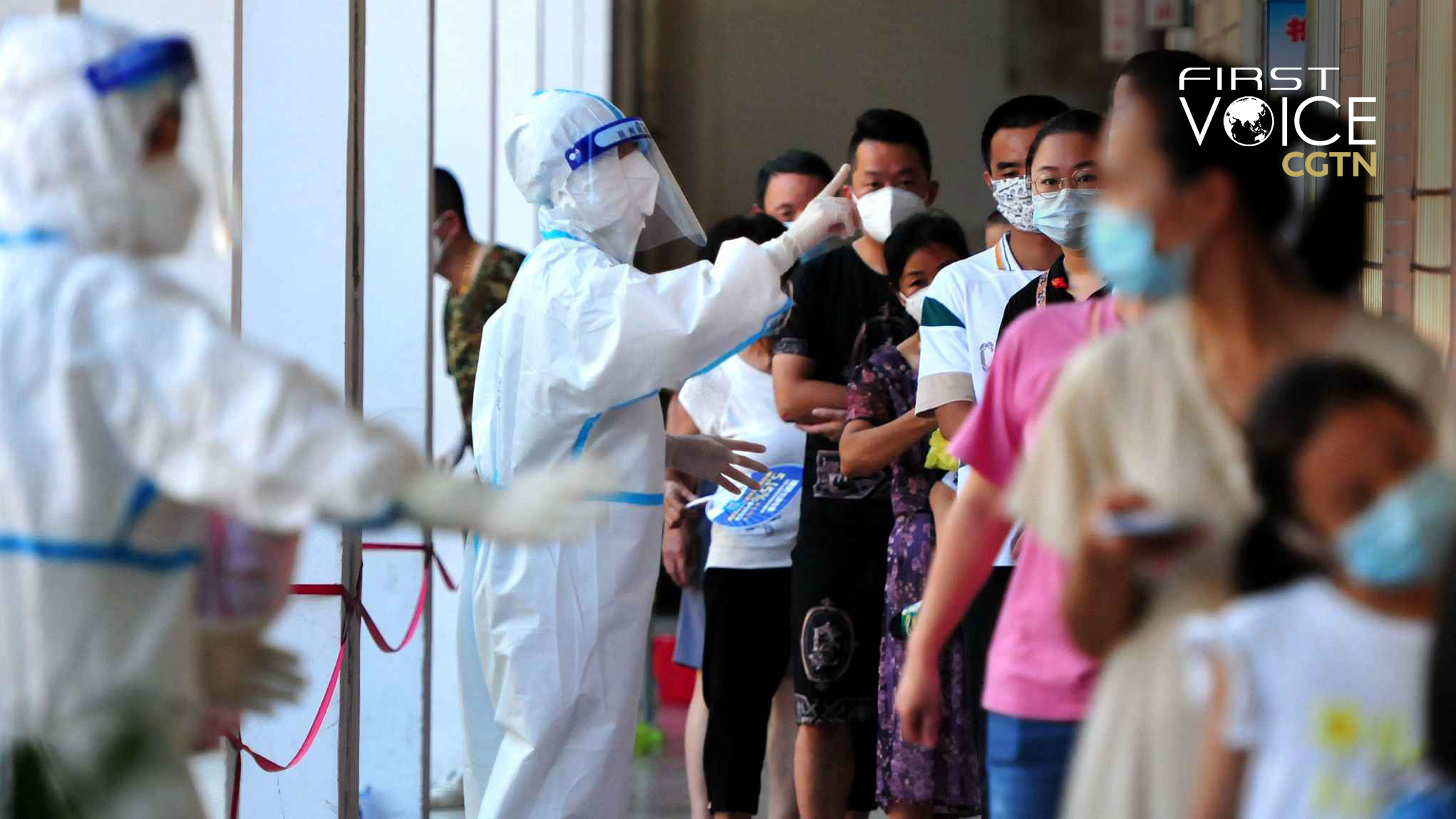
Editor's note: CGTN's First Voice provides instant commentary on breaking stories. The column clarifies emerging issues and better defines the news agenda, offering a Chinese perspective on the latest global events.
China's National Health Commission (NHC) announced on late Monday that the management of COVID-19 will be downgraded from Class A to Class B from January 8 while also renaming the "novel coronavirus pneumonia" to "novel coronavirus infection."
The change is in line with the current disease characteristics that has seen the virulence of the virus substantially weakened. The downgrade doesn't mean completely dropping COVID-19 controls, and people's health remain on top of the government's agenda as the prevention measures enter a new stage.
With the Omicron variant becoming the dominant strain, only a very low proportion of the infected manifest symptoms of pneumonia. As the disease is showing weakening virulence and is gradually evolving into a common respiratory infection, it is time to roll out modified measures.
In addition, for the past three years, policies including large-scale lockdowns and movement restrictions have delivered a time window for China to build a shield against the raging virus. Over 90 percent of the population has been fully inoculated with COVID-19 vaccines. As of December, a total of 13 types of COVID-19 vaccines are available for a second booster, and more than 3.46 billion doses have been administered on the Chinese mainland.
China's efforts in enhancing its medical facilities cannot be underestimated. In 2021 alone, the country increased 8,013 medical institutions and 348,000 hospital beds, according to China's Xinhua news agency.
And, on November 17, Guo Yanhong, an NHC official said at a briefing that China will ensure that intensive care units (ICU) account for 10 percent of all beds in the hospitals that specialize in treating moderate and severe COVID-19 patients, to tend to the most vulnerable patients.
Since the outbreak of the virus, China, among all major countries, has managed to keep the lowest infection and fatality rates. The country's anti-virus measures are well calibrated.

People enjoy leisure time at a business center in Beijing, capital of China, December 24, 2022. /Xinhua
People enjoy leisure time at a business center in Beijing, capital of China, December 24, 2022. /Xinhua
China has met the right conditions to shift the focus from strict control to gradual resumption of people's mobility. The country is moving closer to the finishing line of the race against the virus, but this doesn't mean the pandemic is over. China is not the only country that is removing COVID-19 curbs in this new stage of development.
Singapore, for instance, is removing most remaining COVID-19 limits and allowing the full return of employees to workplaces after years of difficult fight against the virus. While gradually reviving its economy as the Southeast Asian financial hub, Singapore still requires restriction rules including mandatory mask wearing on public transport and is constantly increasing its vaccination rate. With 93 percent of its 5.5 million population inoculated, Singapore has achieved one of the lowest COVID-19 fatality rates across the world.
Likewise, the downgrade in China can never be equated with a complete drop of prevention measures. Class B means every case still needs to be diagnosed, reported and managed, and places where the virus breaks out be disinfected. Instead of blanket lockdowns, the Chinese government is shifting its focus to protecting groups vulnerable to the disease.
It continues to enhance the vaccination rate of the elderly and promote the second booster doses among people at higher risk of severe illnesses. Triage systems will be set up to treat people with severe symptoms, and more focus will be put to monitor the development of COVID-19 in places with inferior medical conditions, including elderly care institutions, schools and rural areas; according to the NHC.
In addition, the downgrade, as health experts believe, can free up resources from makeshift hospitals to normal medical institutions. This, to some extent, can help guarantee enough medical facilities and personnel to treat patients and save lives in ICU wards. More fever clinics in hospitals above secondary level, as the NHC requires, are also required to better protect people vulnerable to the disease.
Downgrading the management of COVID-19 to Class B doesn't mean an end to the race against the virus. Rather, it signals the new stage in this difficult fight. The development of the virus requires corresponding modified measures. A blanket anti-virus policy is no longer suitable at the current stage, and China is not the only country that is making this change. China's shift is to better protect, not give up, people facing higher risk of the severe illnesses.
(If you want to contribute and have specific expertise, please contact us at opinions@cgtn.com. Follow @thouse_opinions on Twitter to discover the latest commentaries in the CGTN Opinion Section.)